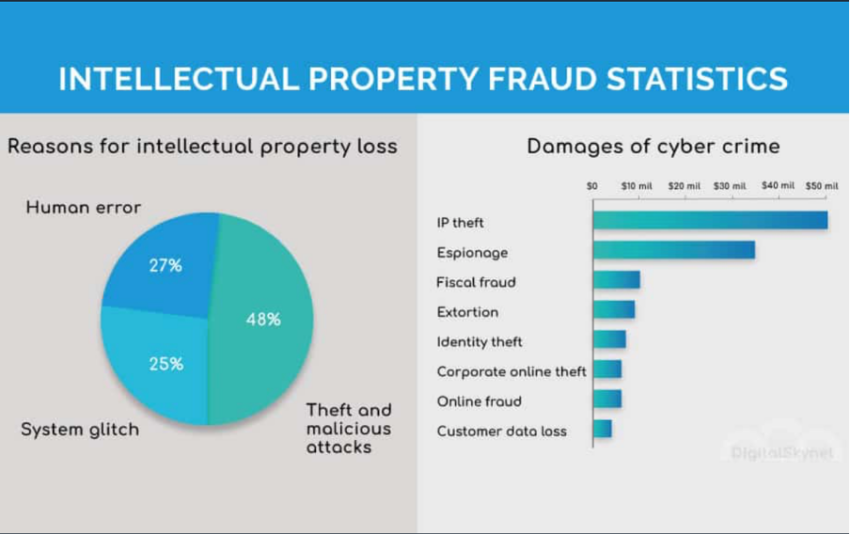Intellectual property (IP) rights have proved to be an important ingredient in the digital world. Especially in 2022 with the evolution of web3 and NFTs and the growing illicit activities surrounding it.
Intellectual property (IP) is a fundamentally important part of a modern economy. An old concept that goes back to the early middle ages, intellectual property first emerged in the 14th century. It is securing an idea of one’s belonging/right, such as physical property rights and property registries over land and other material goods.
But the thing about ideas is that they’re non-rival, and this concept of non-rivalry makes it exciting and challenging. Intellectual property has been fundamentally important in creating capital goods; things one can own involving ideas and the incentives around financing and licensing those ideas.
This is becoming a core part of the industrial economy’s business models. Some of the biggest companies in the world have large amounts of their balance sheets made entirely of intellectual property.
But then along came the internet and the ability to copy data and information freely. It starts to create issues for intellectual property, given the ease of stealing or hacking. New business models have emerged that thrive on harvesting data and other information.

This has caused a shift into what is being referred to as ‘web3,’ a product of open-source programming and code to create a new decentralized web. Much of web3’s fundamental economic infrastructure and property is open source. That is, it doesn’t use the old industrial intellectual property system. Hence, IP rights remain a concern with the rapid traction of the web3 and non-fungible token (NFT) sectors.
Web3 and the Need for IP
Blockchain is essentially a ledger mechanism for recording things. Humans have gone through multiple iterations of ledgers to determine who owns what. This is where NFTs come in as a way to register and track the ownership of digital goods.
Despite hiccups, the NFT market continues to expand as we move into 2023. The NFT market is even projected to reach more than $230 billion by 2030. But with the swift rise comes numerous obstacles. Minting an NFT for a virtual asset containing artwork, a song, or trademarks that creators no longer own or have a valid license can land them severe legal trouble.
One of the headline-making examples of possible trademark infringement concerning NFTs was the Hermes Rothschild lawsuit. The French luxury brand claims that the virtual artist Metabirkins infringed its federally registered Birkin emblems. Although, Mason Rothschild counter-argued that their Metabirkins weren’t commercialized goods.
The NFT community looks forward to the final verdict, as it might become a benchmark for using intellectual property in NFTs.
Acknowledging IP
Many ask whether or not it’s legal to take a screenshot of an NFT, and in that case, why do people purchase the NFT and not just make a copy of it? People are free to take screenshots of NFTs in the same way that they can take a screenshot of a photograph of a portrait. However, each NFT is interlinked to a smart contract, making it unique and authentic. Blockchain technology ensures that ownership of a particular NFT can easily be verified.
There have already been many major discrepancies and doubts over ownership claims. Buyers of popular non-fungible token collections like Bored Ape Yacht Club and Moonbirds do not legally own any IP rights, claimed a Galaxy Digital report.
Over the past year, many brands have wondered whether it is the best time to explore web3 or if it’s still too early. Some popular brands have been going in full force, while others have been more reluctant, given the unclear regulation around the space.
But this also coincides with the need to protect intellectual property rights for projects, ideas, slogans, etc. Many companies that have already begun incorporating web3 into their business models have raised similar interests. BeInCrypto reported at the start of 2022 that the entertainment industry was near the top of this list.

Connecting the Dots
So what is the future of IPs within this industry? BeInCrypto reached out to Mary Ma, the Chief Strategy Officer at MixMarvel, to shed some light on this matter. Mary Ma suggested that ‘collective ownership would be a feasible solution for the current IP dilemma.’
Speaking further, there are two broad areas to choose from for IP regulation. One of them is the Creative Commons Zero (CC0) license. This allows artists to put their work in the public domain so that anyone can reproduce it and profit from it. The other is a solution between “all rights reserved” and “no rights reserved” that would give NFT owners commercial or limited commercial rights.
Traditionally, protections of works of art are automatically granted through copyright regulation and enforced through centralized establishments. The U.S. nonprofit enterprise, Creative Commons, published the standard licensing CC0 in 2009. This permits creators to claim that their works belong in the public domain.
Solutions to Consider
With creators of CC0-categorized works relinquishing ownership of these works inside the legal experience, everybody can use them for commercial purposes.
Ma added:
“NFT creators are increasingly choosing this “no rights reserved” CC0 license for their projects in recent days. Contrary to what most people think, “no rights reserved” does not mean that the original work will become worthless due to unrestricted duplication or that the creators will not be able to make money from their own work anymore. As a matter of fact, it is quite the opposite.”
Robbie Broome described a similar scenario in a July 27 tweet that read:
The CC0 license’s removal of limits on copying, spreading, and secondary creation, the self-propagation effect, will allow project owners to enjoy garnering attention without exerting too much effort to promote their work.
Overall, various projects brewing in the space should adopt suitable IP licenses accordingly to avoid mishaps or confusion. Especially now when regulators have a keen eye on making stringent laws that can squeeze the sector further.
 beincrypto.com
beincrypto.com